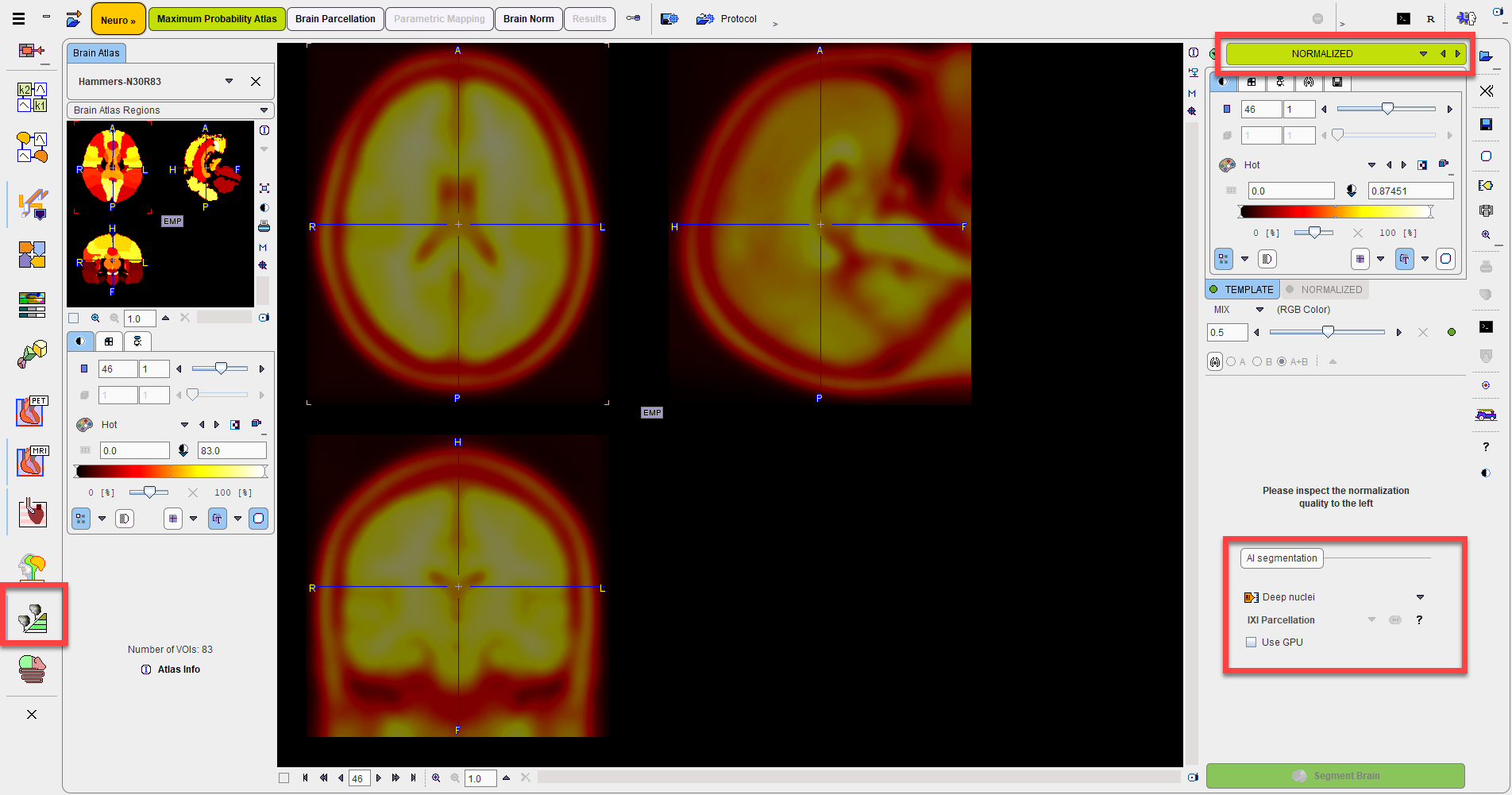The structure of the PAI framework is illustrated below.
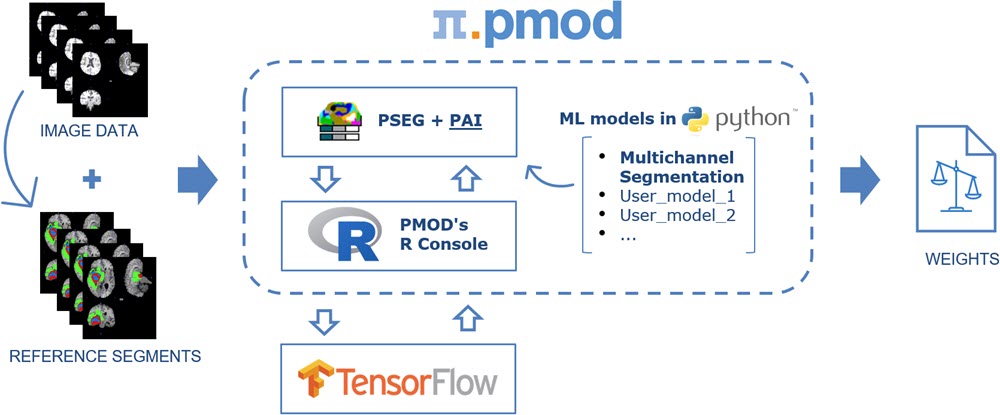
The actual ML platform used by PAI is the well-known TensorFlow solution. The neural network structure and the training method are correspondingly developed as Python scripts suitable for TensorFlow and constitute the ML model. The data for supervised learning are prepared in PAI, communication with TensorFlow is implemented via the R console in PMOD.
Learning Set
The Learning Set in PAI consists of references to the training data (i.e. Links to the input series in a PMOD database) and a specification of the preprocessing steps required to bring the data into a format suitable for machine learning. The training data itself consists of data samples. Each data sample consists of an input (one or several images) and its expected segmentation or classification result (one or several segments, in the format of label maps that can be associated with the input images, or label for a given class).
Training
Training is performed in TensorFlow using a Learning Set and an ML model. There are different mechanisms available, which will be explained below. Basically, training can be performed locally on your local machine, or delegated to a more powerful infrastructure such as Cloud-Computing.
Training Result
The result of training is a "trained model" - a set of Weights for the layers in the neural network, and a Manifest file containing information about the training process. These results are added to the Learning Set, making it ready for use in Prediction (i.e. automated segmentation or classification). As new training data become available, it can be added to the Learning Set and incremental training performed to improve prediction. An export functionality allows transfer of the result to other PMOD installations for prediction (sometimes known as Deployment).
Prediction
Prediction applies the trained model to a new set of input image data, resulting in a segmentation or classification result. Segmentation results may then be converted to VOIs and used for quantification.
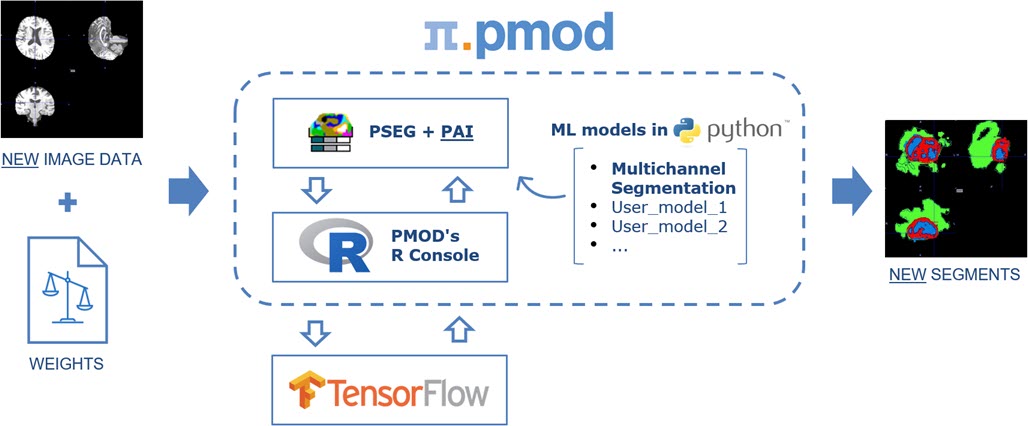
Implementation in PMOD tools
PAI functionality is available in PBAS, PSEG, PCARDM and PNEURO.
In View, shortcuts to AI Segmentation and Classification become available on the Prprocess tab, and Machine Learning is available as an option in the Segmentation interface:
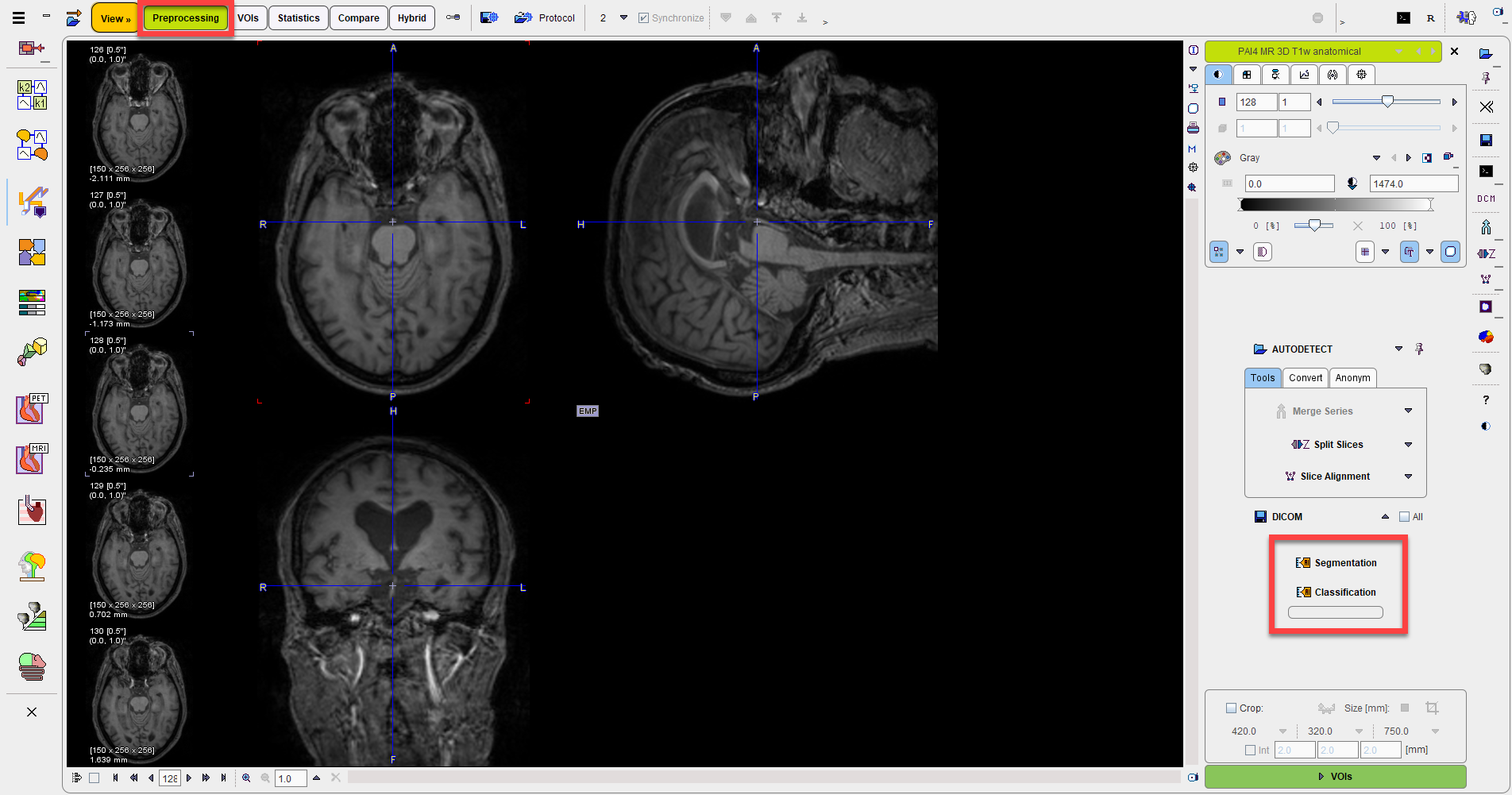

Learning Sets for AI projects are prepared via the Edit Learning Set option in the main View tool menu:
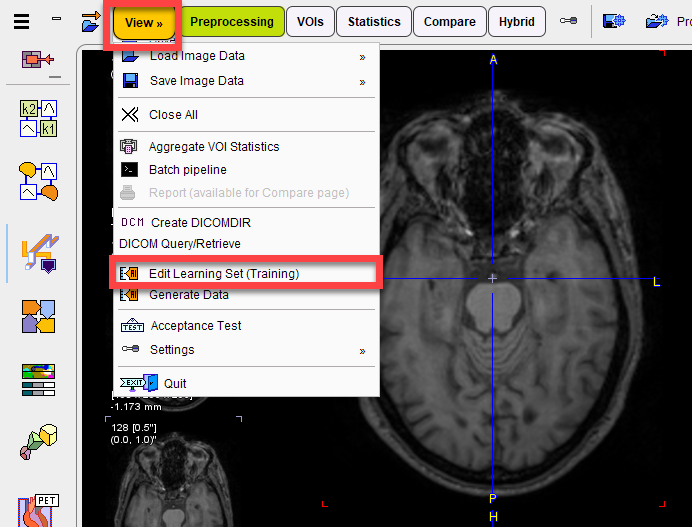
In PCARDM the Machine Learning Segmentation option becomes available for either MRI_Myocardium_2D (mouse) or MRI_Human_Myocardium model:
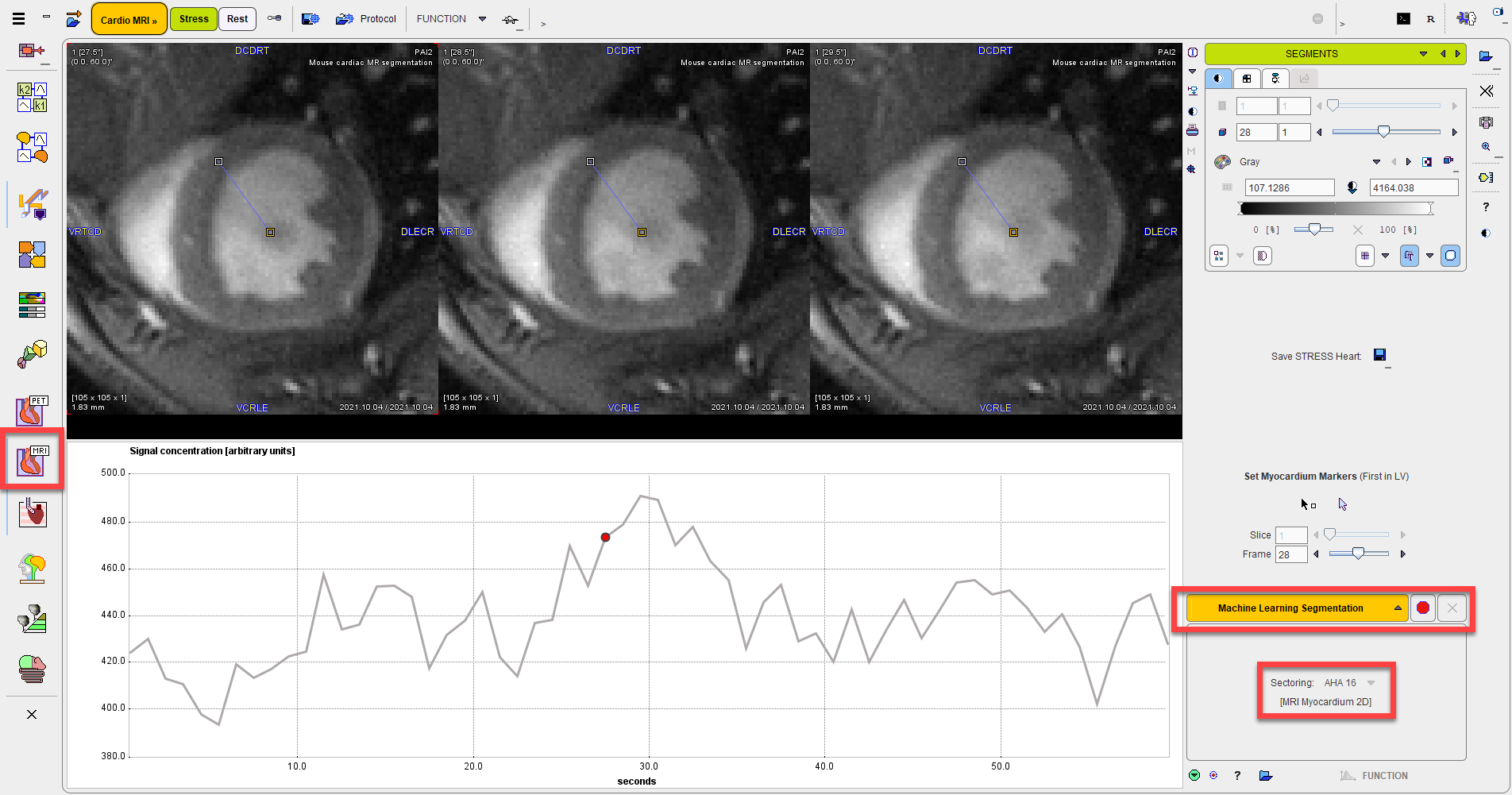
In PNEURO, the IXI Parcellation model is available for replacement of the deep nuclei segments on the Normalized page in the Maximum Probability Atlas workflow:
